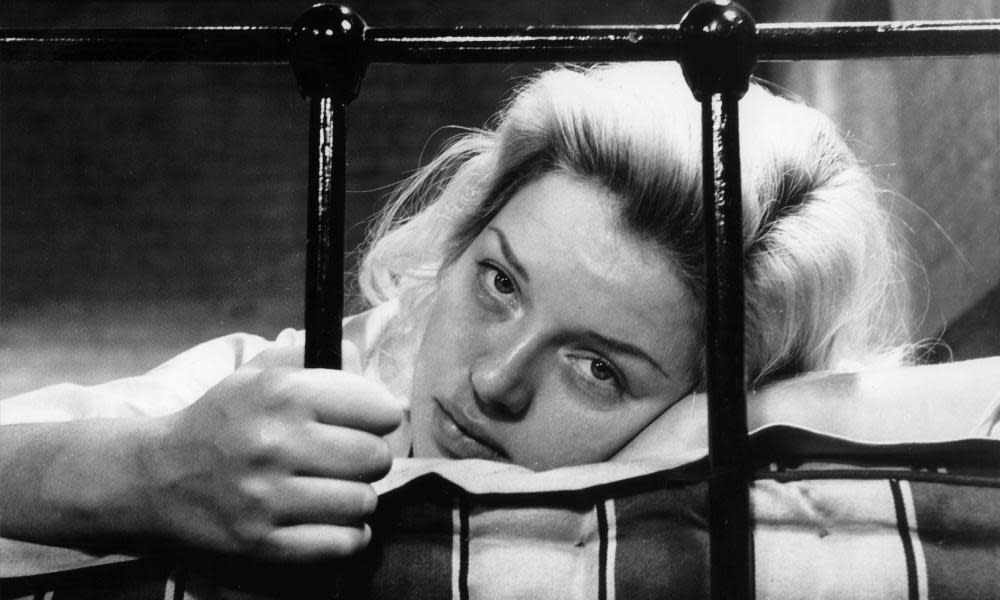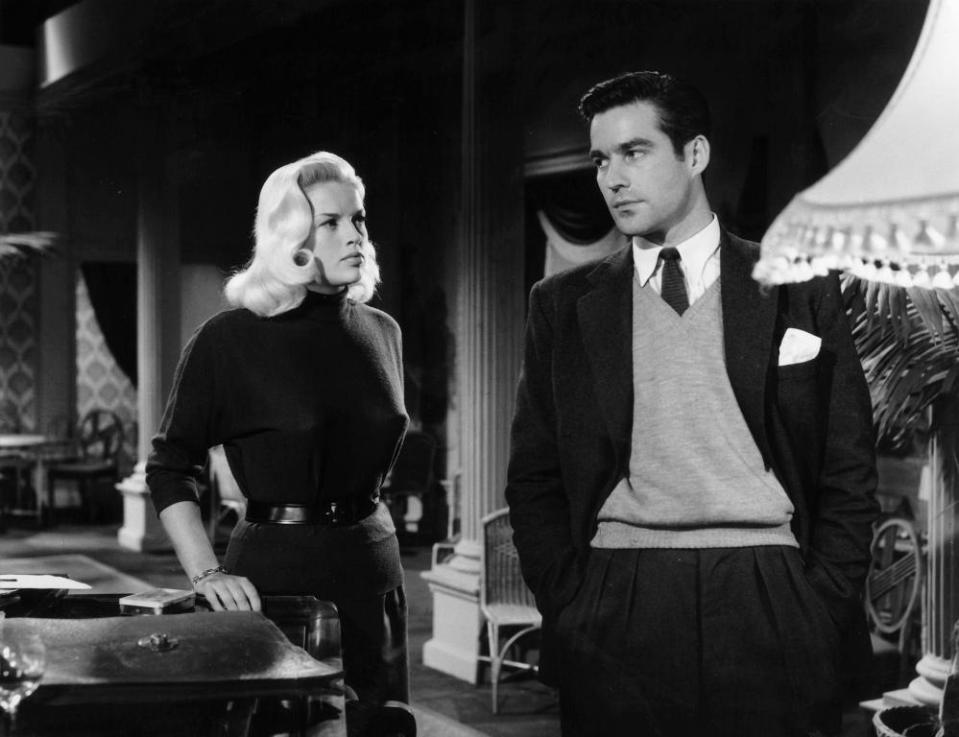Yield to the Night review – unforgettable death-row drama starring Diana Dors

J Lee Thompson’s gripping capital punishment drama Yield to the Night from 1956 gets a re-release: a Brit noir classic and a unique career achievement for Diana Dors as Mary Hilton, a woman awaiting execution for murder. The events leading up to Mary’s crime are intercut with her jail ordeal, attended by female wardens or “matrons” in the brightly lit cell, whose lights can never be dimmed because of suicide-watch surveillance. It unfolds like an eerie, lucid dream of squalor and shame. I first became aware of this film in 1995 when the Smiths’ Singles album came out, using as cover design the image of Dors gripping (or, ambiguously, caressing) the frame of her bedstead, like the bars of a cell. The final track of that album, incidentally, is There Is a Light That Never Goes Out.
Mary is permitted a black cloth over her eyes to help her sleep, which she grimly compares to the blindfold given to someone in front of a firing squad. She doesn’t mention it, but both Mary and the cinema audience would sense the other comparison: the sentencing judge’s black cap. Mary becomes delirious as she becomes obsessed with all the tiny details in her cell: the scratches on the wall, the sheen of the enamelled tin mug, the painted brickwork, the pattern on the back of the matrons’ playing cards. Thompson’s camera records these details with unforgettable psychopathic precision. Above all, Mary is obsessed with a door in her cell that has no handle on her side. She (and we) are never explicitly told – but Mary realises that she will see that door open only once, and very soon. What lies behind it, horrifyingly, is the gallows platform, as near to hand as an ensuite bathroom.
The movie was based on a novel by Joan Henry (who was married to Thompson), and both the book and Henry’s screenplay were written before the Ruth Ellis hanging, but the movie was released one year afterwards and its production and reception were surely coloured by the queasy aura of fascination radiated by the Ellis case. Interestingly, Mary Hilton is a less potentially sympathetic figure than Ellis; she doesn’t commit a crime of passion on the spur of the moment, but something planned for months – an act of revenge which, in the traditional manner, is a dish eaten cold.
The opening credit sequence confronts you with the stark, wordless melodrama of the slaying, the victim tracked from Trafalgar Square to Belgravia, a nightmare of Dutch angles and vividly banal visual details looming up to the camera. Intermittently from then on, we see what led up to it. Mary is a young woman separated from her husband, living in west London and working in an upscale French-style perfume store. She falls for handsome, moody young musician Jim Lancaster (played by the actor and Oscar-nominated screenwriter Michael Craig) and they date for a while until Jim falls for a haughty socialite who toys with his affections and humiliates both him and Mary, triggering a terrible act of violence. In prison, Mary is visited by her ex-husband Fred (Harry Locke), her querulous mother (Dandy Nichols) and anguished brother Alan (John Charlesworth).

The narrative of the crime is well done, but the whole film, together with Mary – and perhaps Diana Dors herself – are exalted and transfigured in those harrowing prison scenes taking place unbearably in the present tense. Where once she was blond, brassy and sexy (though open and vulnerable) now Mary is dead-eyed, almost a sleepwalker, waxy of skin, calm, quiet-voiced, enigmatically placid, unrepentant about her crime – though the fact of the capital verdict has rendered this last issue irrelevant. But it is as if Mary is awed by her insight into the reality of death. She has been inducted into the occult mystery and knows something that no one else has grasped: not the prison governor, not the chaplain, not the home secretary.
As the time drags on, waiting for a possible reprieve, Mary becomes friendly with her matrons. They are not allowed to smoke, but the prisoner (oddly) is, and when the chief warden comes in, Mary will occasionally snatch the illicit cigarette out of a matron’s mouth and pretend it’s hers so they don’t get into trouble – like the decent sort she is. On her exercise walks, Mary will brood on lines from AE Housman’s A Shropshire Lad (which Jim used to read) on mortality and the brevity of life: “About the woodlands I will go / To see the cherry hung with snow.” But the British title – it was called Blonde Sinner in the US – is taken from Homer’s Iliad, with the herald telling Hector and Ajax to stop fighting because night is falling: “It is well to yield to the night.” Mary is not yielding to a natural night, however, but the artificial one of execution. Finally, two matrons are allowed to kneel and pray either side of Mary, like the thieves crucified with Christ.
Related: Ruth Ellis: the murder case we can’t forget
And as for the awful final moments themselves, it is interesting to compare this with other dramas on the same subject. We are not introduced to the hangman in the black comic way of Robert Hamer’s Kind Hearts And Coronets (1949). Shelagh Delaney’s screenplay for Dance With a Stranger (1985), about the Ruth Ellis case, does not actually show Ellis’s imprisoned life and death at all. Adrian Shergold’s Pierrepoint (2005) with Timothy Spall as the famous hangman, did not shrink from showing you the horrible scene when the door to the adjoining cell was opened, revealing the noose. None of this is what happens in Yield to the Night, but there is a terrible power in its descent of darkness.
• Yield to the Night is on digital platforms.

 Yahoo Movies
Yahoo Movies 
